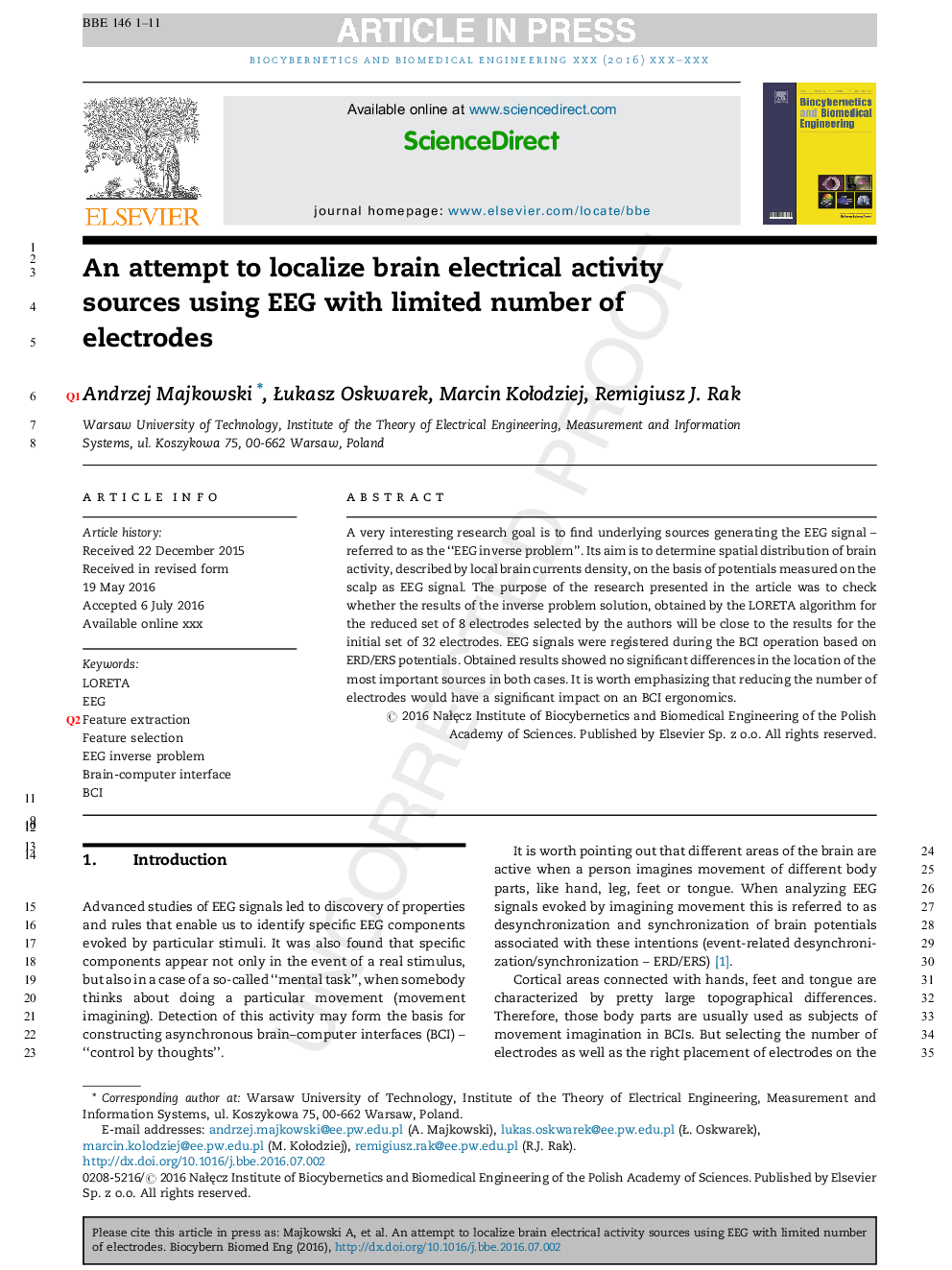| Article ID | Journal | Published Year | Pages | File Type |
|---|---|---|---|---|
| 6484271 | Biocybernetics and Biomedical Engineering | 2016 | 11 Pages |
Abstract
A very interesting research goal is to find underlying sources generating the EEG signal - referred to as the “EEG inverse problem”. Its aim is to determine spatial distribution of brain activity, described by local brain currents density, on the basis of potentials measured on the scalp as EEG signal. The purpose of the research presented in the article was to check whether the results of the inverse problem solution, obtained by the LORETA algorithm for the reduced set of 8 electrodes selected by the authors will be close to the results for the initial set of 32 electrodes. EEG signals were registered during the BCI operation based on ERD/ERS potentials. Obtained results showed no significant differences in the location of the most important sources in both cases. It is worth emphasizing that reducing the number of electrodes would have a significant impact on an BCI ergonomics.
Related Topics
Physical Sciences and Engineering
Chemical Engineering
Bioengineering
Authors
Andrzej Majkowski, Åukasz Oskwarek, Marcin KoÅodziej, Remigiusz J. Rak,
